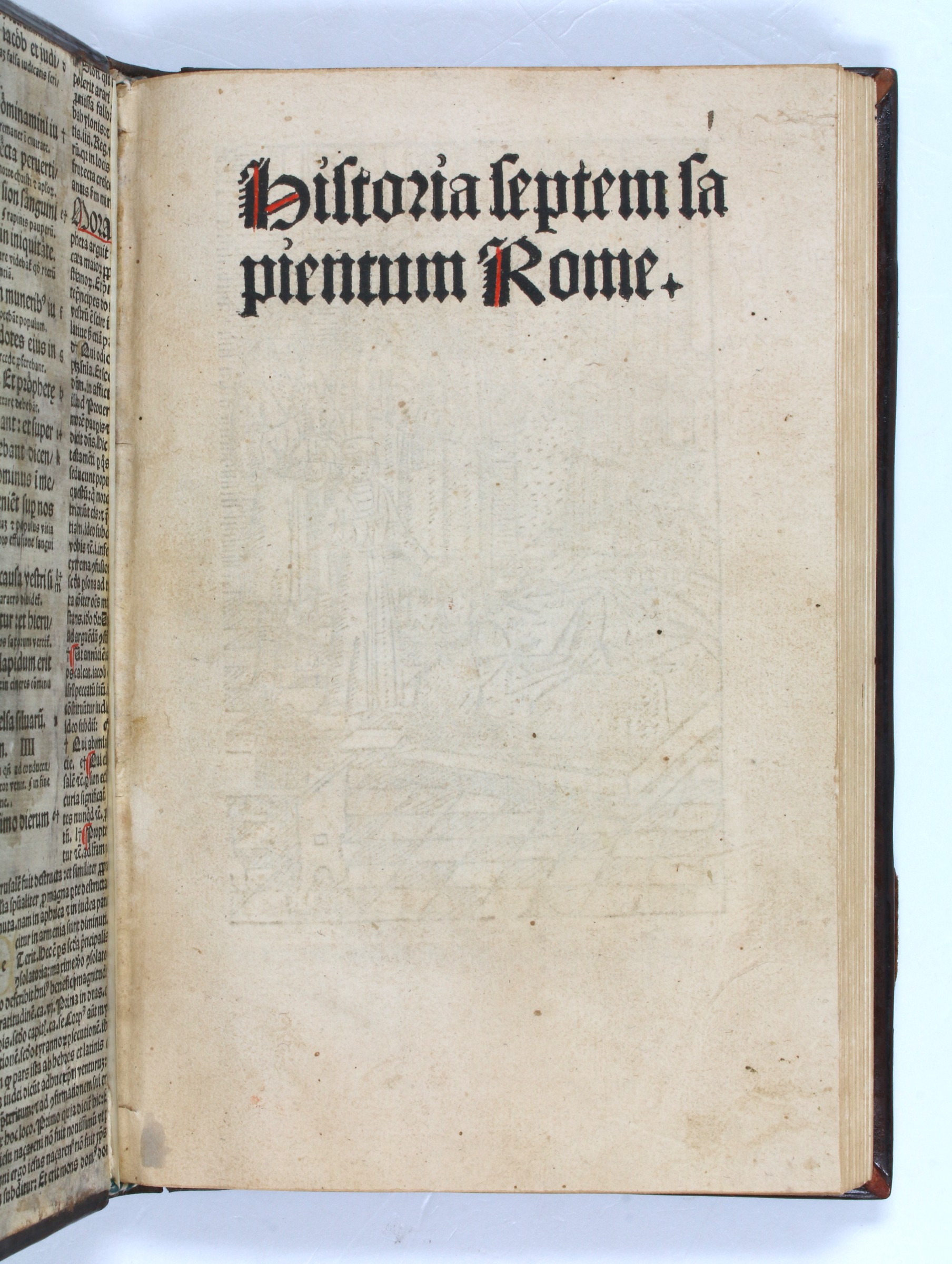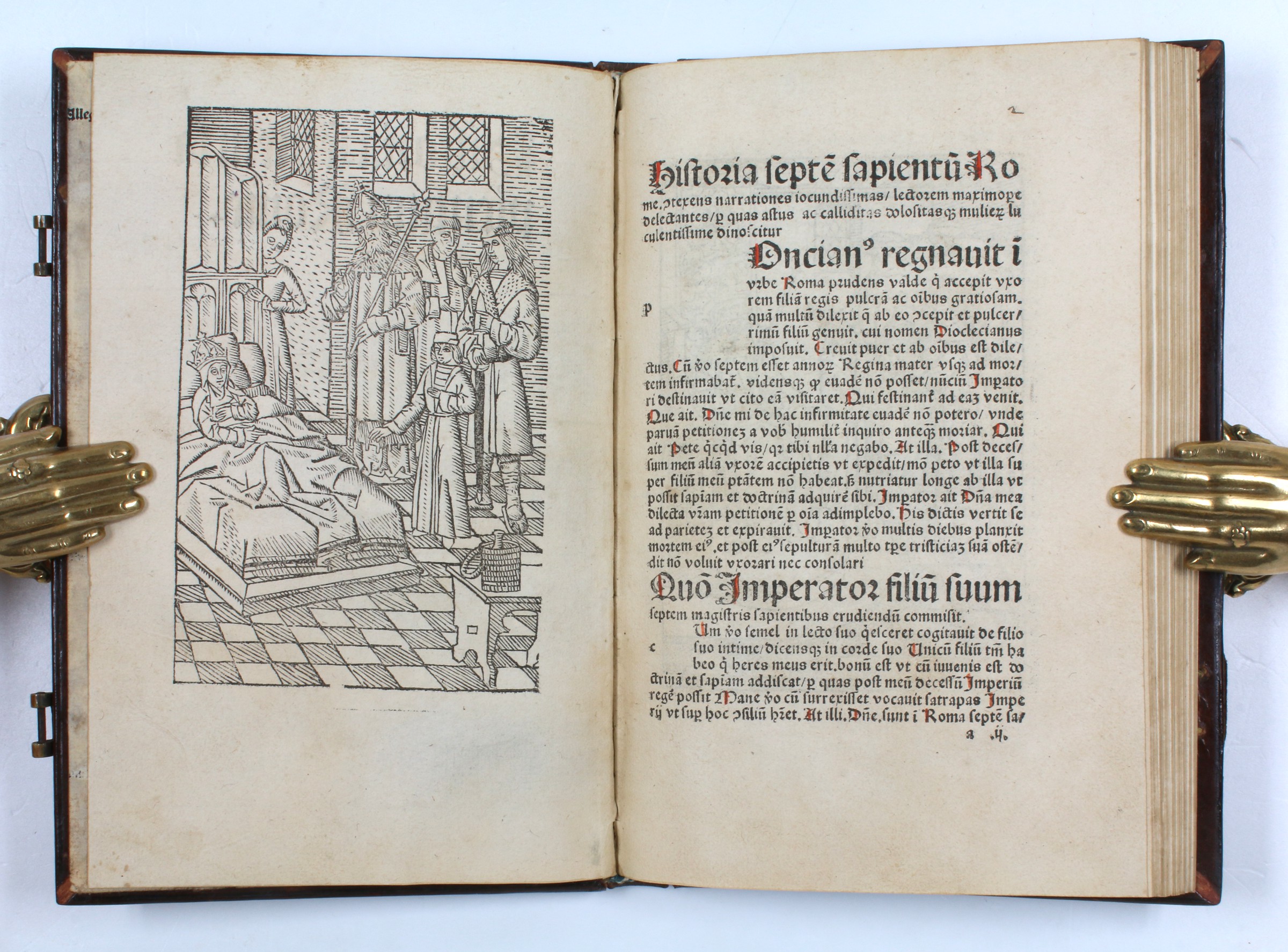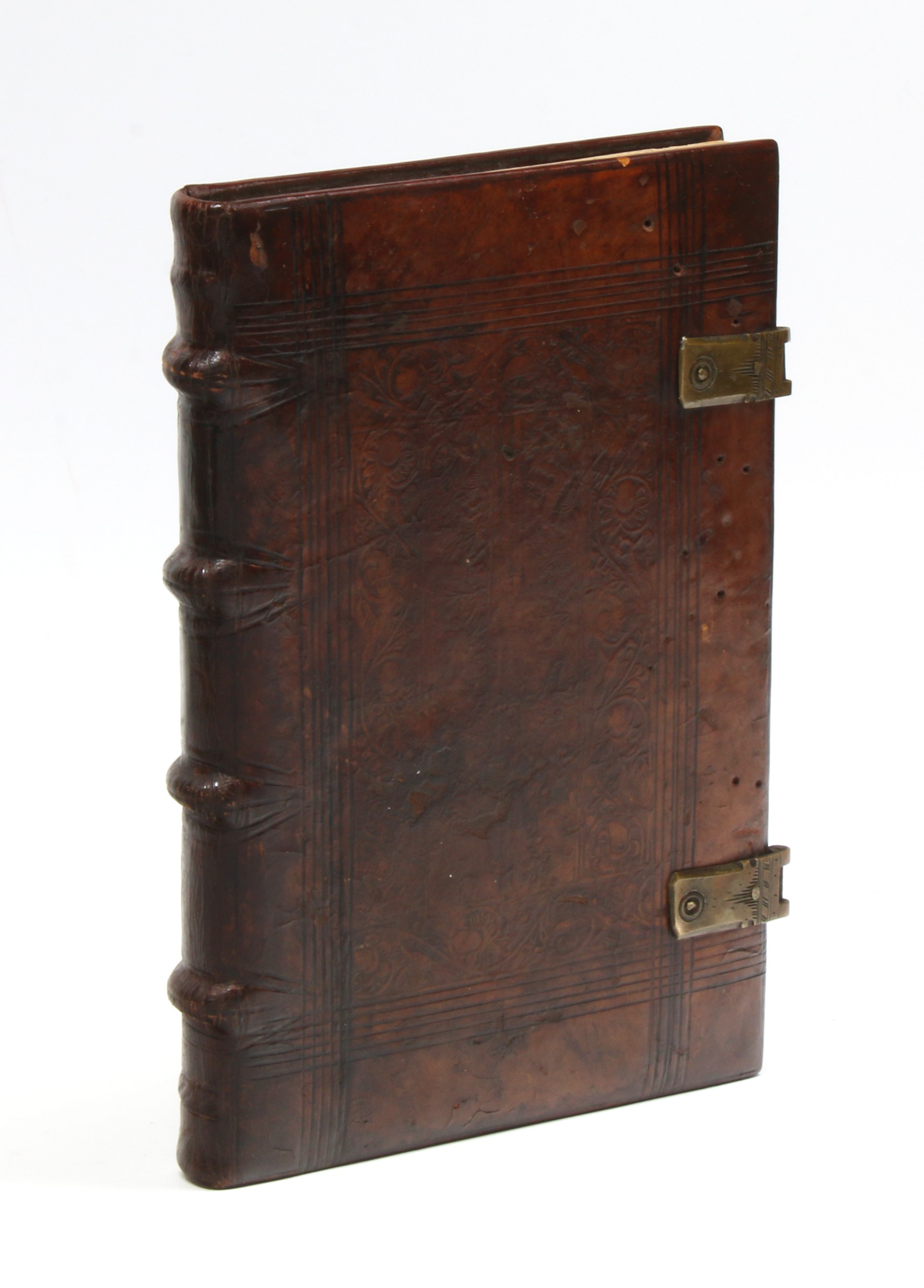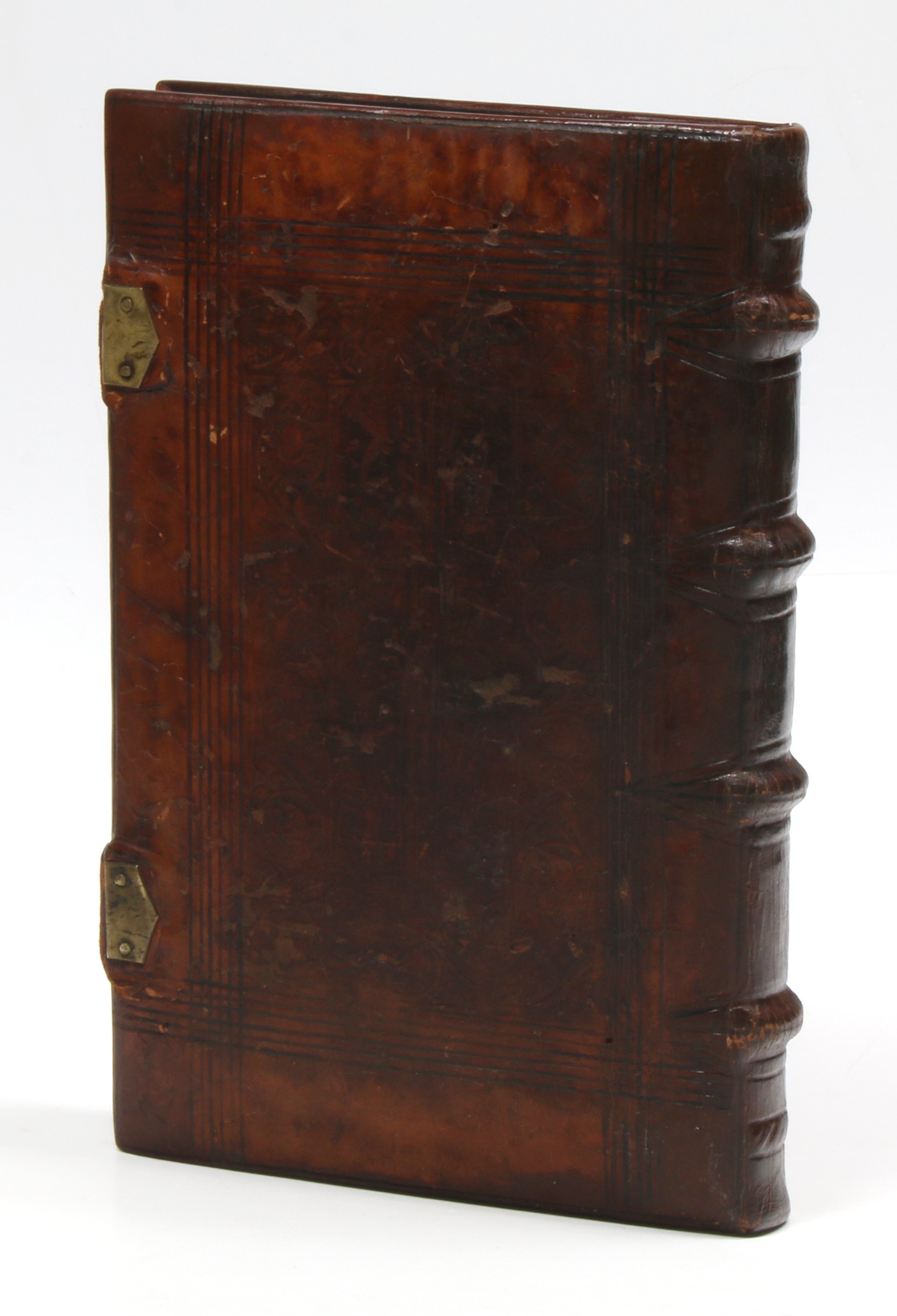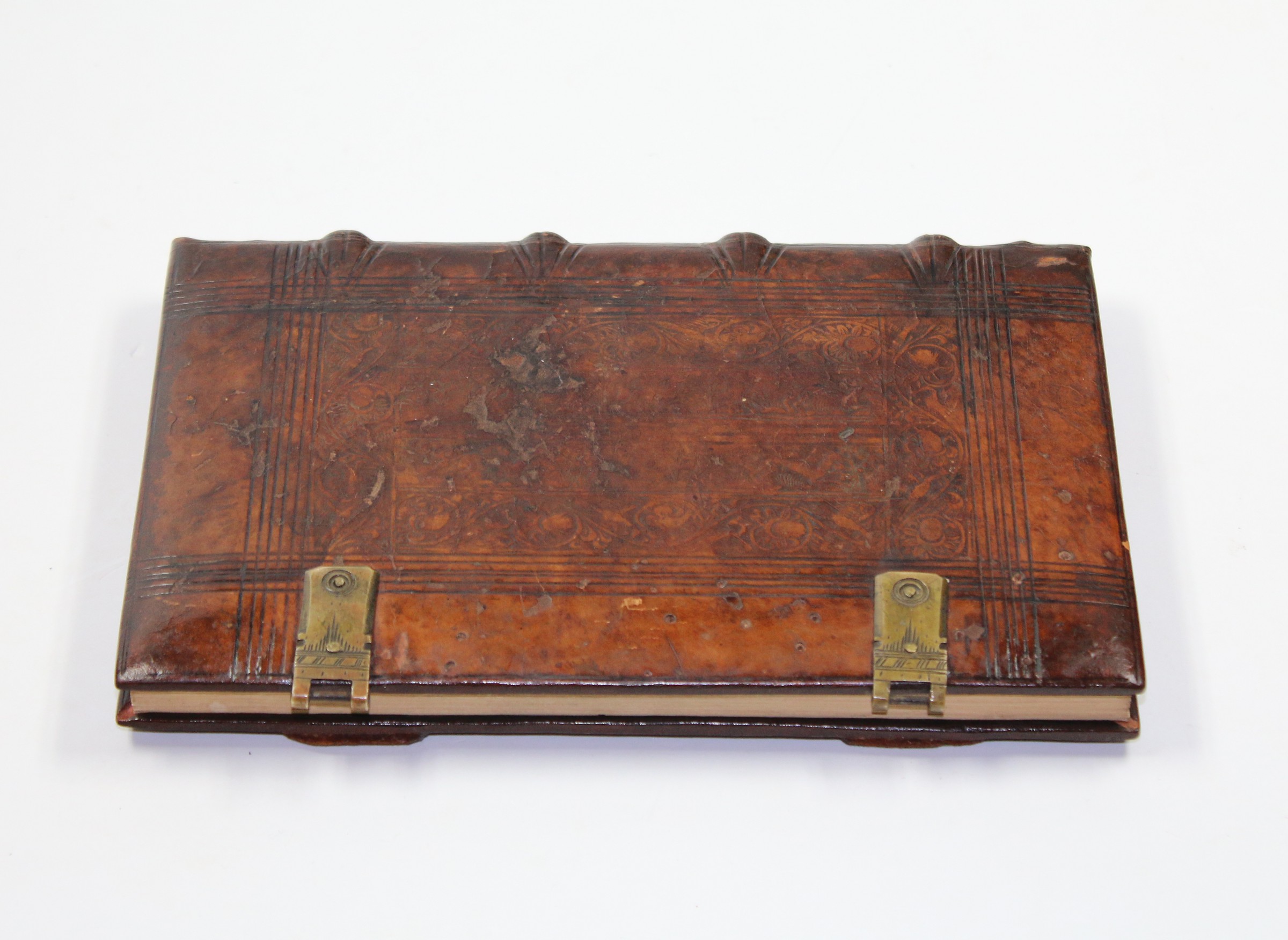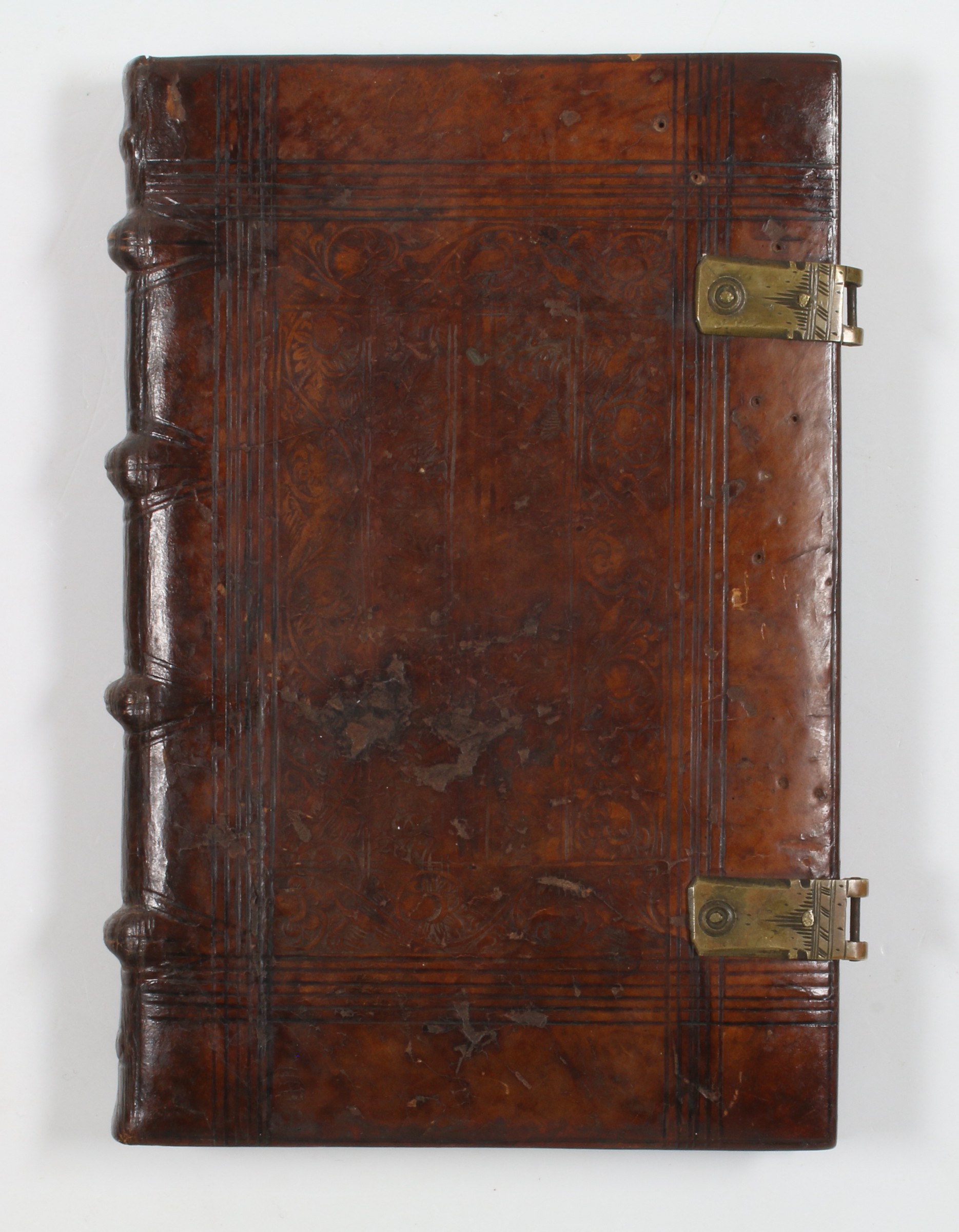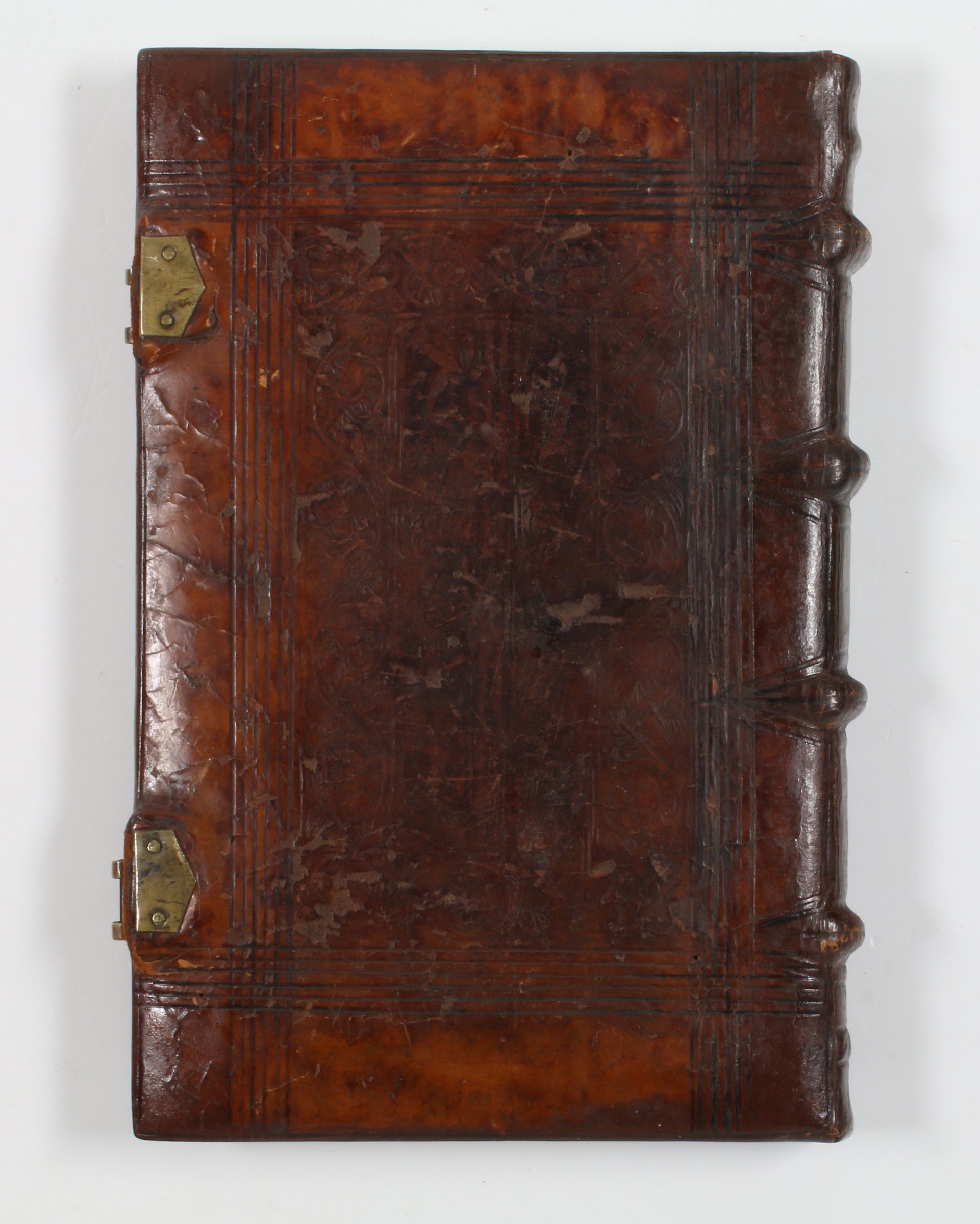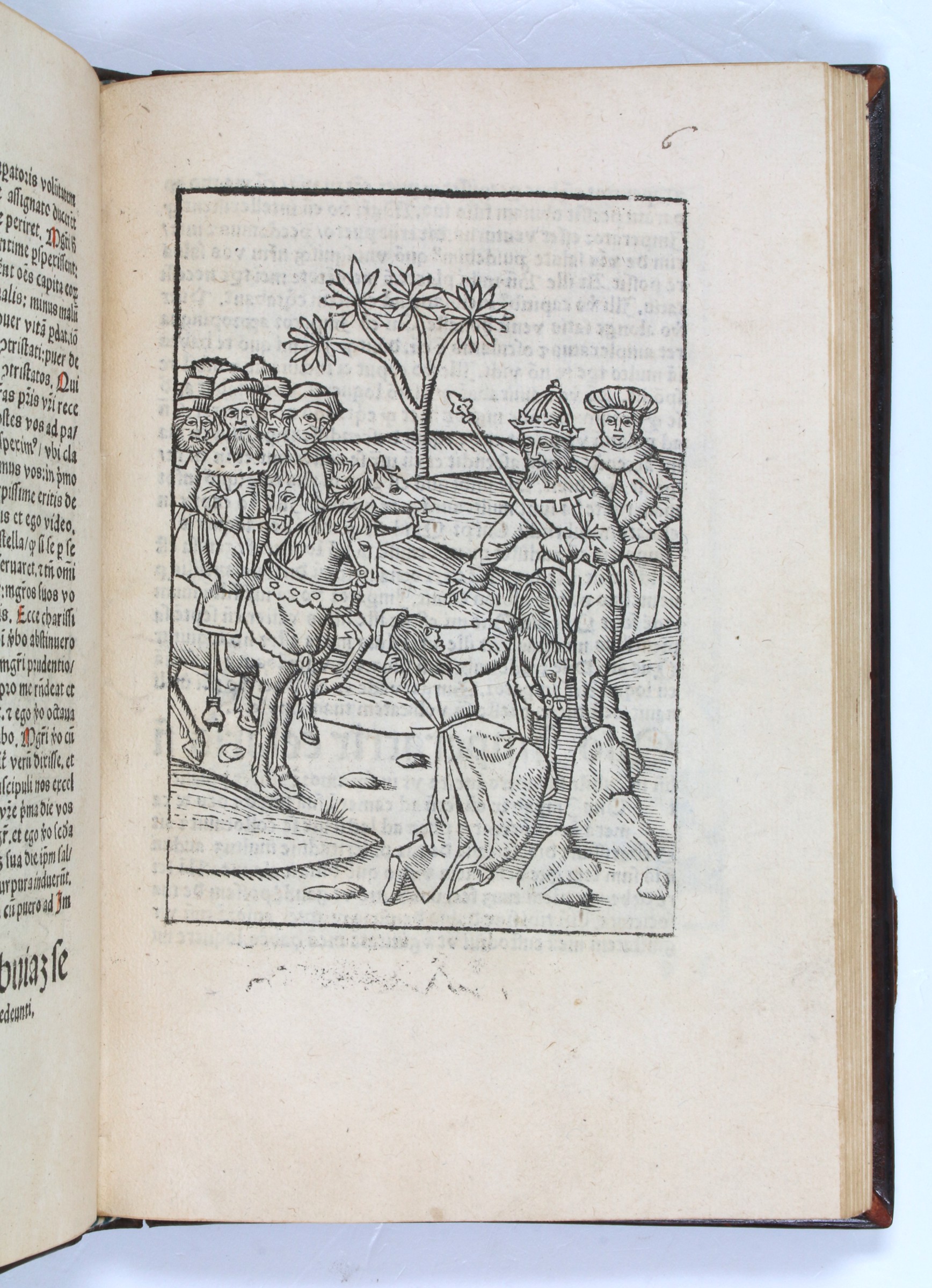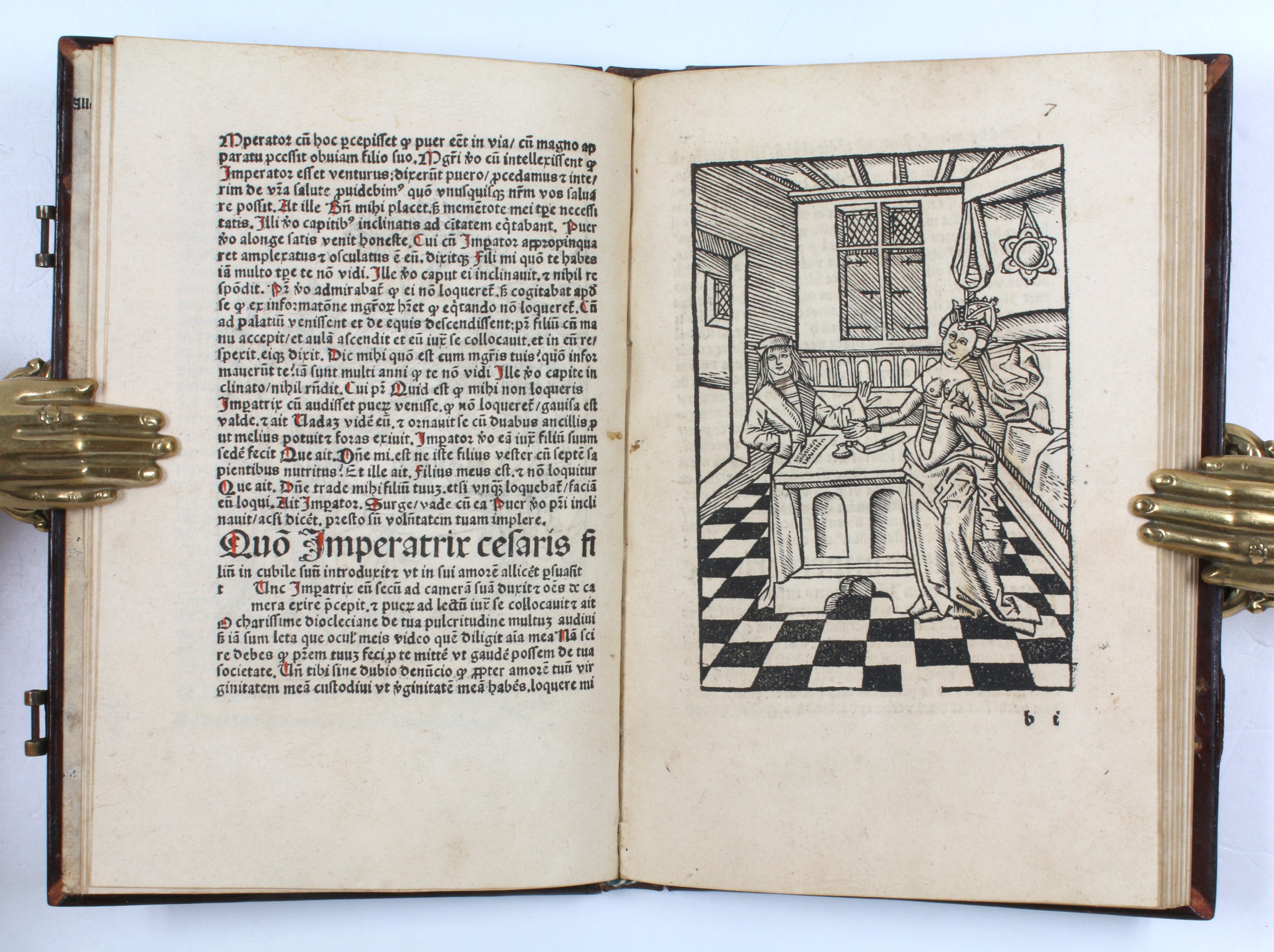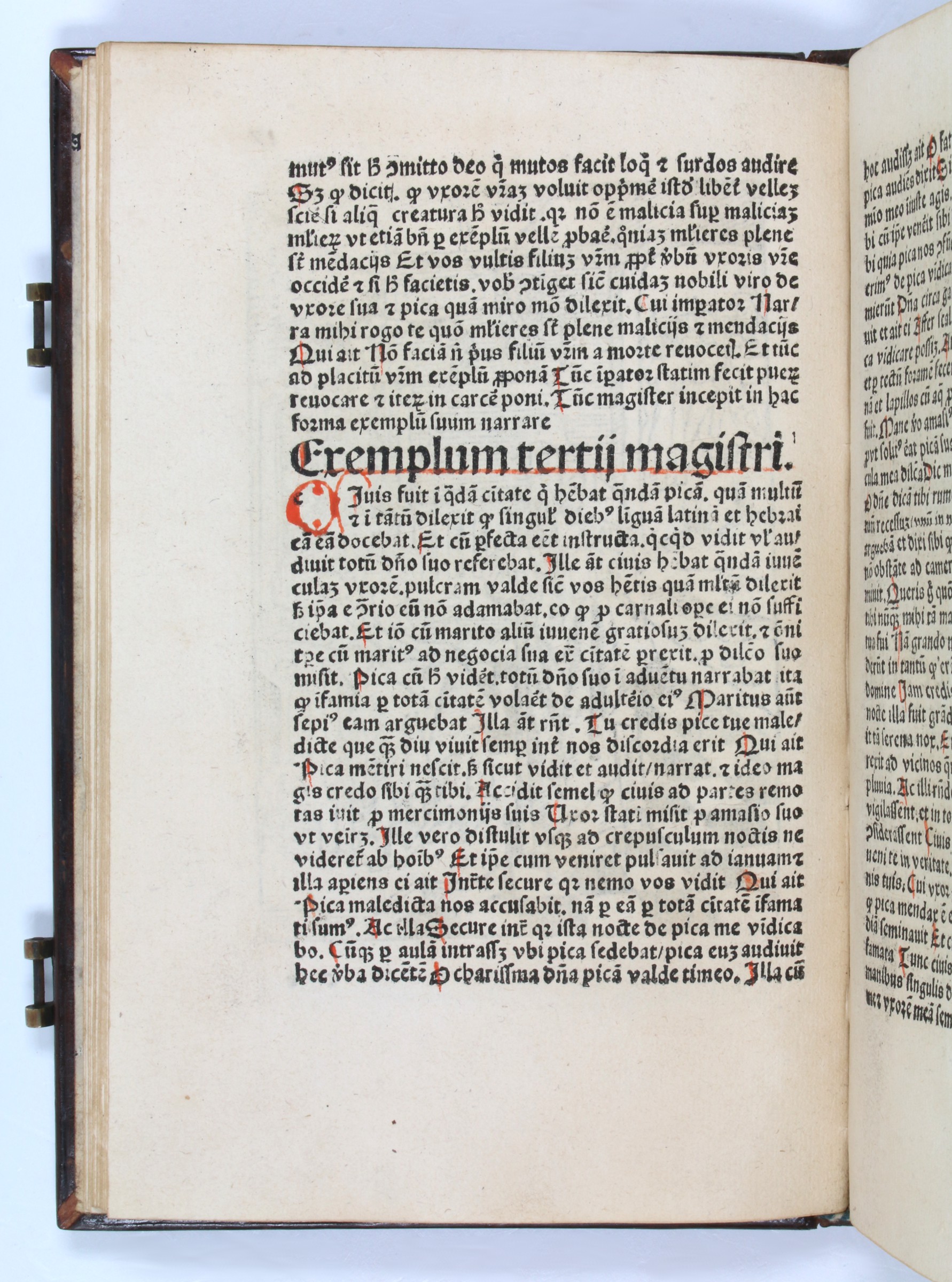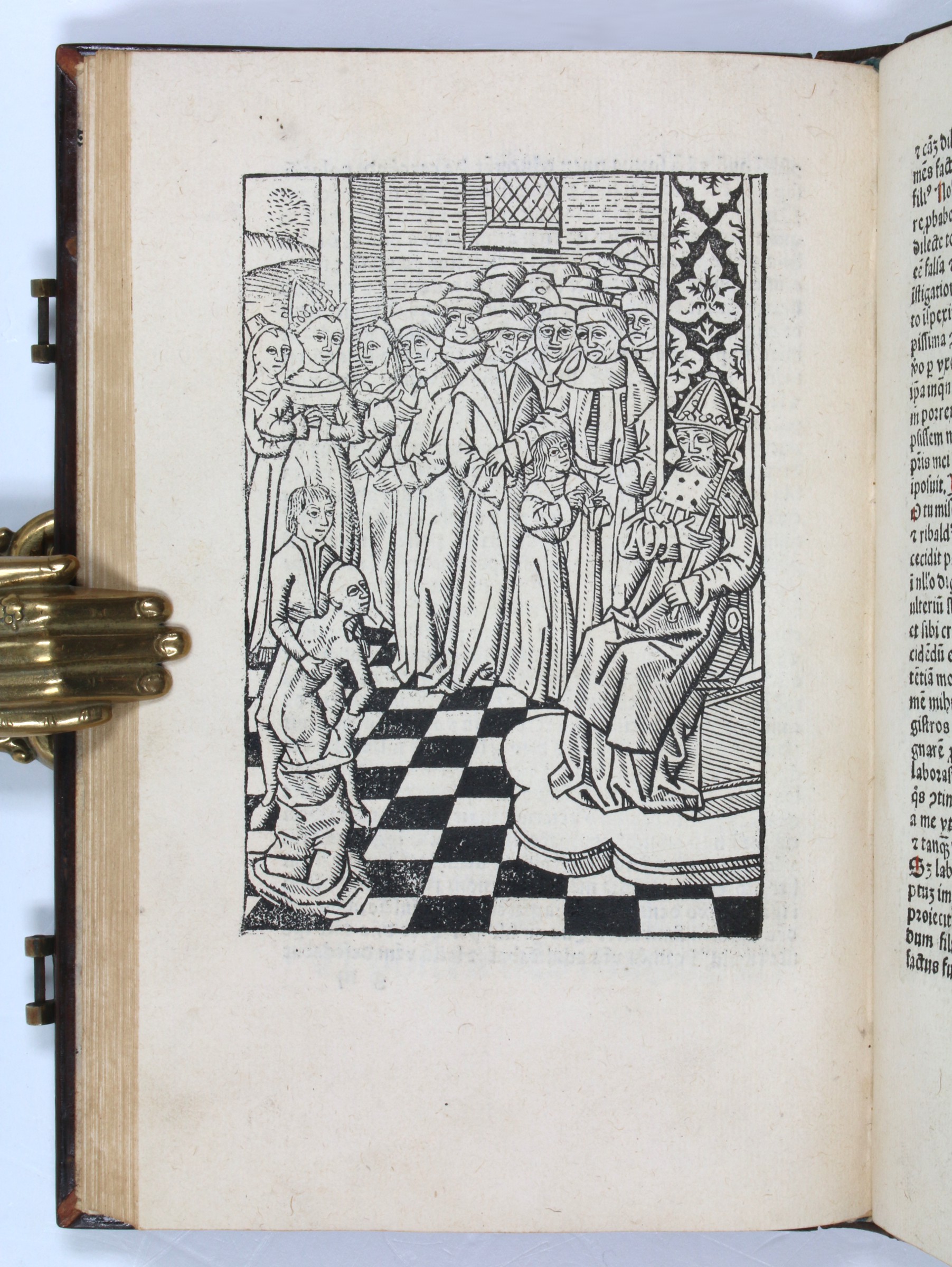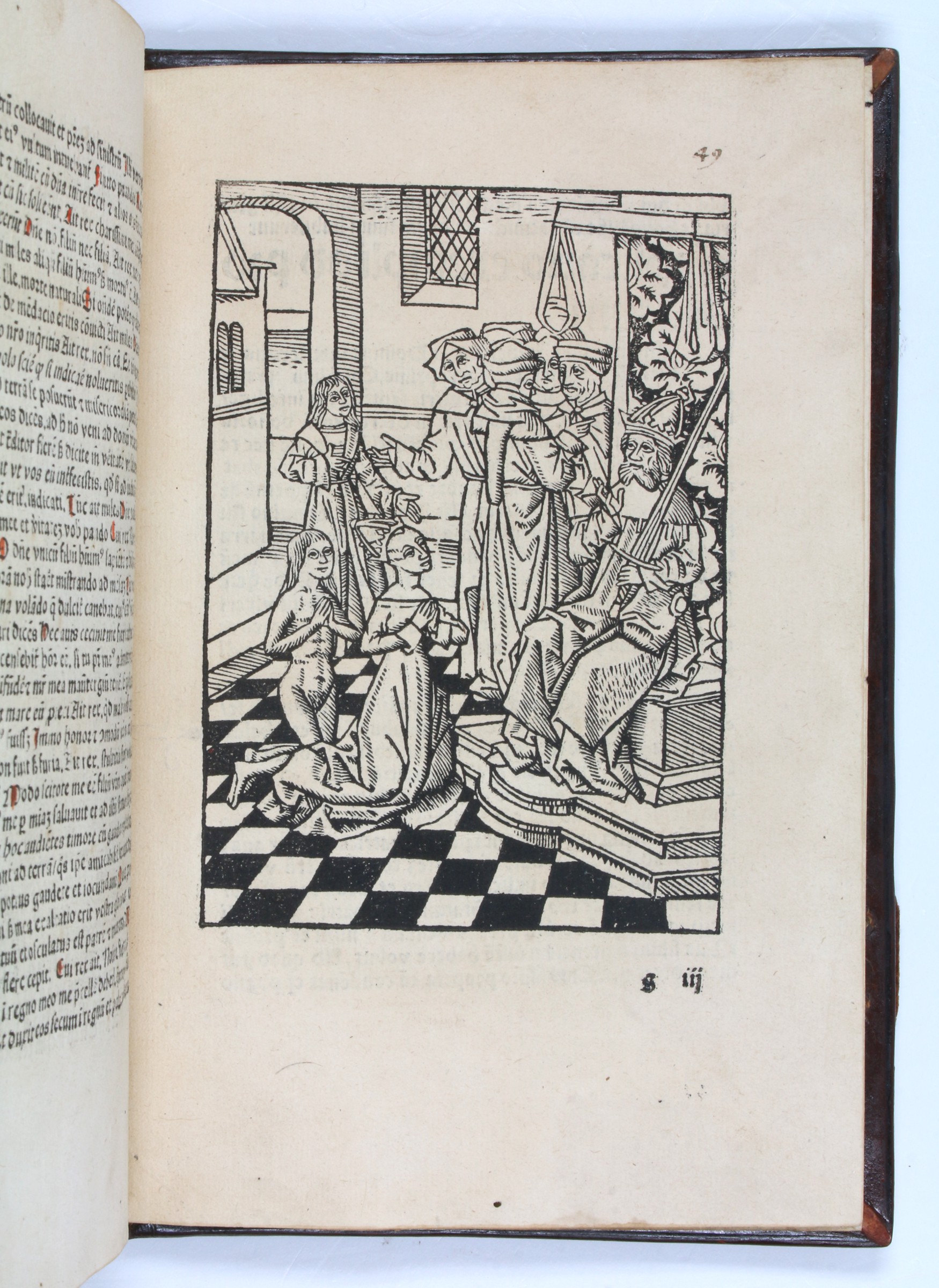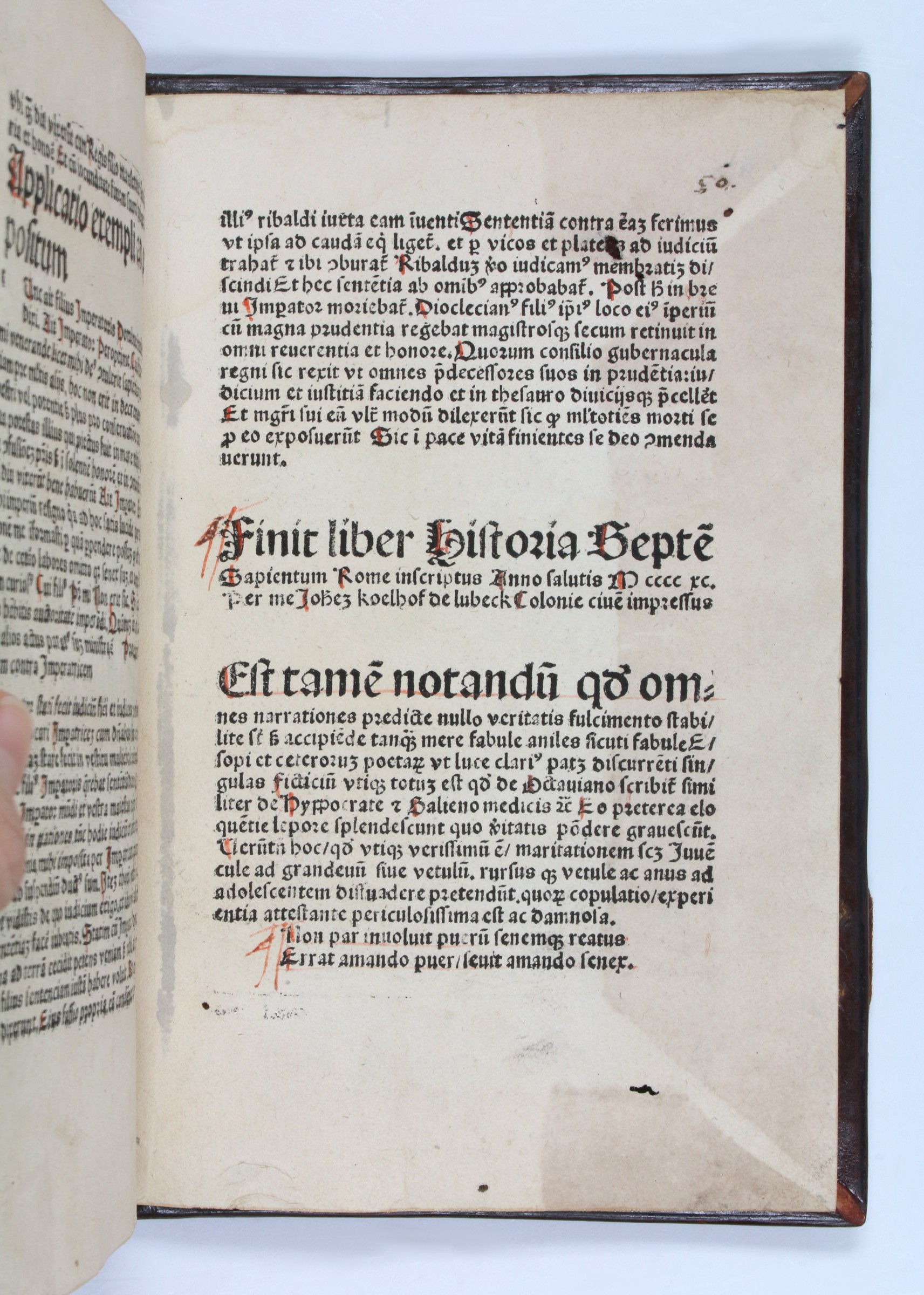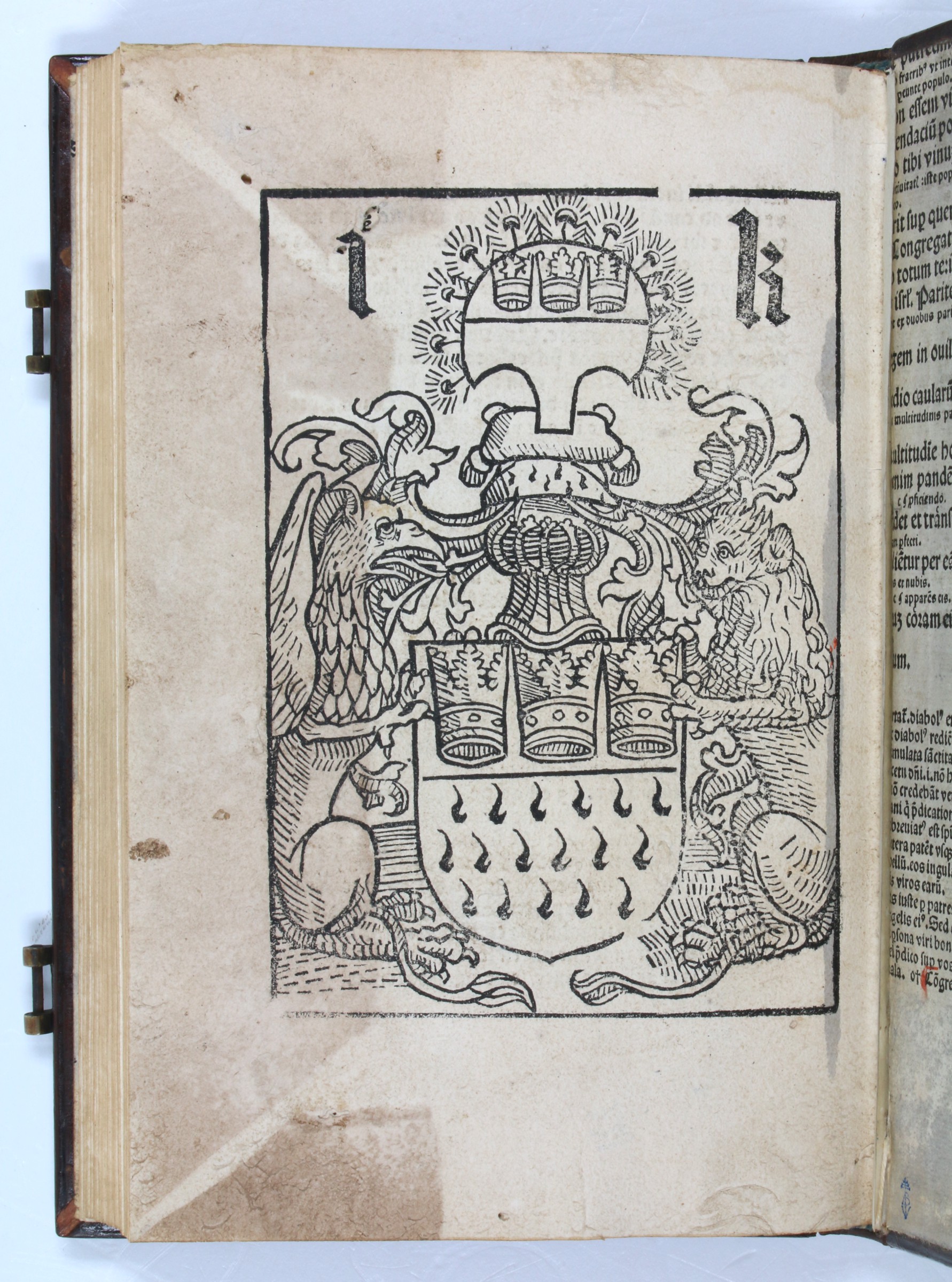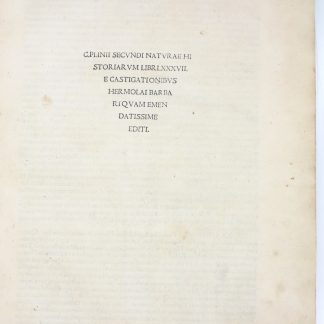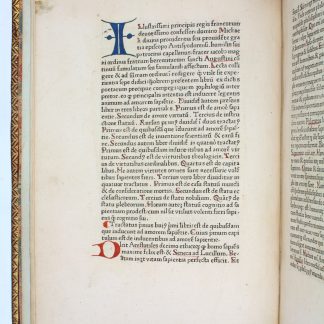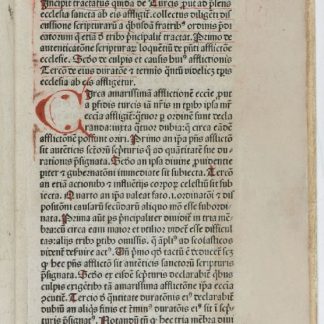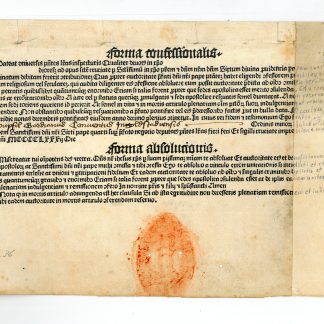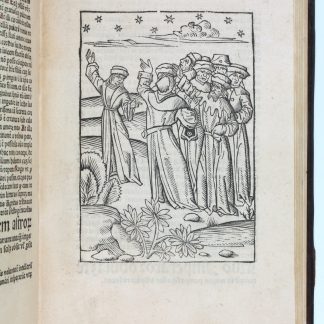Incunabular Arabian Nights: The Book of Sindbad in Western European disguise
Historia septem sapientum Romae.
4to (137 x 207 mm). [50] ff. [a-g6, H8]. 34-37 lines, gothic type, rubricated in red. Illustrated with a large armorial woodcut printer's device at the end and 23 full-page woodcuts, with two of the woodcuts repeated several times. Bound in contemporary blind-tooled full calf over wooden boards. Remains of clasps. Endpapers from a rubricated incunabular edition of the Biblia cum glossa ordinaria.
€ 125.000,00
Very rare Cologne edition of "The Seven Sages of Rome", a popular medieval cycle of stories about wise counsellors and wicked women which has its ultimate roots in the Middle East, where it is usually known as "The Book of Sindbad". This Latin edition (the seventh altogether) further boasts a series of woodcuts which count among the earliest illustrations of any version of Alf layla wa-layla.
The frame narrative tells the story of prince Diocletian, who is falsely accused by his jealous stepmother, but is finally set free by the seven wise men (corresponding to the Seven Sages of Greece). These seven masters tell a story each, over seven successive days. The narrative's oriental elements are derived partly from the the Old Testament (Joseph and Potiphar), but principally from its Arabian sources: the present version shares four stories with "The Book of Sindbad", the main difference being that "the sages tell only one story each instead of the two or more in the Eastern tradition" (Runte, p. xiii). The first printed edition was also published in Cologne, by J. Veldener, in 1475. The popularity of these stories proved to be immense, inspiring Boccaccio and Chaucer, among others.
The style of the 23 fine woodcuts which illustrate this edition is reminiscent of the Dutch Bellaert Master. They were first used in the Low German edition published by Claes Leeu (and printed by his brother Gerard) in Antwerp on 11 April 1488. The Leeu brothers lent them to Koelhoff, and re-used them in Antwerp Latin edition by Gerard Leeu of 6 November 1490 under the new Latin title "Historia calumnie novercalis".
Binding slighty rubbed, with old wormholes to covers. Very clean throughout; a contemporary touch of light red colour has been applied to the second woodcut. Extremely rare: no more than 16 copies known in public collections, many of which are incomplete. The only other copy ever to appear on the market was part of an incunabular sammelband (the Dietrichstein copy, first sold through Gilhofer & Ranschburg in 1933).
HC 8725. GW 12853. Goff S-449. IDL 2330. Vouilliéme (Köln) 587. BMC I 230. Polain 4440 (incpl. copy in KUL). ISTC is00449000. Runte, The Seven Sages of Rome and the Book of Sindbad, no. 671. Woodcuts: Schramm VIII-301, 303-314 and Kok 92.1-12.


